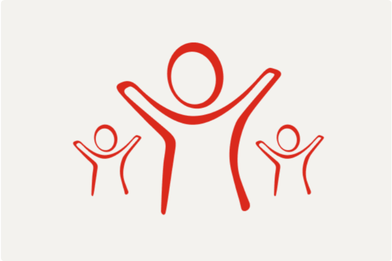In November last year, the UK government announced that the international aid budget would be cut from 0.7 to 0.5% of the gross national income (GNI) for the fiscal year 2021/22. Since then, we have been monitoring the Foreign, Commonwealth, and Development Office (FCDO)’s spend against its promises through the International Aid Transparency Initiative (IATI), to which the UK government reports. The latest available data reveals that the UK government has decisively and disproportionately cut funding for projects involving children and youth, including violence against children.
Findings presented in this blog are a result of data analysis using purpose codes – grouping UK-funded aid projects based on what they aim to achieve – and key words or phrases found in the title of a given project. A methodology based on a targeted word search means that findings do not represent UK aid exhaustively – for instance, looking for projects containing the word child or similar in their title might exclude funding for education or basic nutrition, albeit child relevant (sadly, we know these have also suffered disproportionate cuts). However, this analysis still offers valuable insights into current trends and future priorities of ‘global Britain’ – and the story it tells is not a good one for children.
The UK has pledged to allocate £8.1 billion to Official Development Assistance (ODA) in 2021/22, a 25% cut from the previous fiscal year and a 30% decrease from pre-COVID levels (Fig. 1 and 2). Strikingly, ODA cuts have been deeply uneven across sectors: some areas – such as Transport, including Road transport – have actually been scaled up, while others – such as Health – have been disproportionately downsized. Aid targeting children and youth belongs to the second category.


IATI data does not contain a dedicated child marker, signalling whether child and youth wellbeing is one of the objectives, or the main objective, of a given project. In my analysis, I created a marker for projects whose title contains the words child, children, young, youth, girl, boy, or teenager (including in plural and with a capital letter in case these words are the opening segment of the title). The findings were quite startling.
First, budget for this category of projects has been steadily deprioritised (Fig. 3 and 4), even before the aid cuts. Secondly, budged allocated for 2021/22 amounts to an all-time low of only £90 million, or less than a fifth of what had been allocated in 2019/20, before COVID-19 struck. Finally, compared to the previous fiscal year, funding has been slashed by almost 70%, well over the 25% cut to the ODA budget overall.


I also built a marker to measure cuts to funding allocated to child protection, in particular violence against children (VAC). This time, I looked for project titles containing phrases such as child abuse, child recruitment, and violence against children, among others. Since VAC also falls under violence against women and girls (VAWG) terminology, I also included projects under the purpose code corresponding to ending violence against women and girls. What I found is that funding has been slashed by over 50% compared to the previous fiscal year and by 60% compared to pre-COVID (Fig. 5). This is worrisome not only because VAC affects 1 billion children each year, but because we have been warned, and we now know, that the pandemic has disrupted child protection efforts while multiplying threats for children, leaving them more vulnerable to violence and abuse. The UN Secretary General captured this jeopardy well when he dubbed VAWG the 'shadow pandemic' of COVID-19.

Withdrawal of FCDO funding will have an immediate, and long-lasting, impact on vulnerable children. Country Director for Save the Children Zimbabwe Heather Kerr denounces that “the organisation Childline received over 500,000 calls between February and July, and 60% of them went unanswered because of lack of funding for staff to answer the calls and do the case work.” Similarly, child protection expert Buddhini Wathini from Save the Children Sri Lanka fears that “without organisations like Save the Children to push the government to take child protection seriously and ensure that children who are victim receive appropriate care and protection, children will suffer in the short and long term, become re-victimised through the system, and have nobody to speak up on their behalf.”
A recent vote in the UK Parliament made the previously temporary cuts a reality for many years to come, restricting resources at a time of increased need. As cuts were announced, we feared that they would disproportionately impact the most vulnerable, and sadly this is turning out to be the case. We will continue to analyse the extent and impact of the cuts, and make recommendations to avoid a disproportionate impact on children.
Read more from our blog series on The Future of British Aid.






